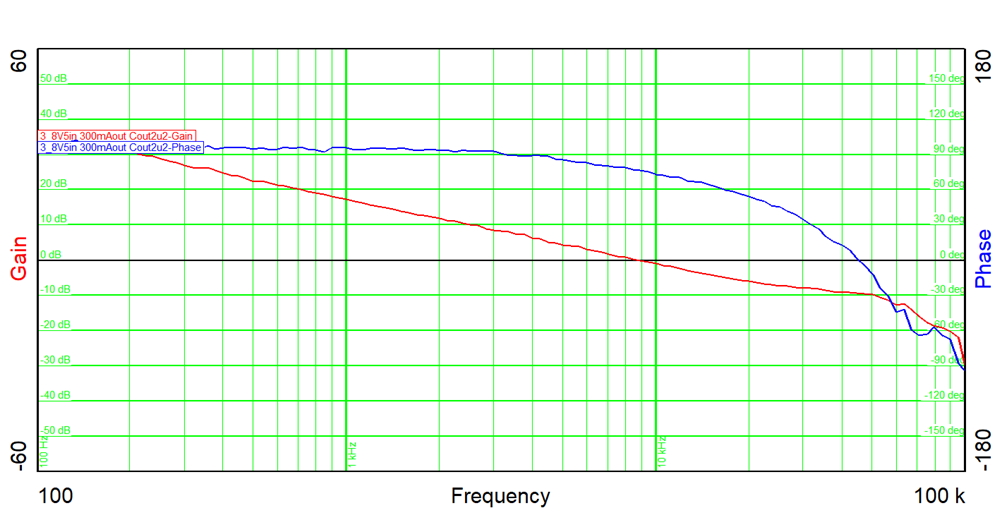TIDT328 april 2023
2.4 Bode Plot at Maximum Duty Cycle
 Figure 2-5 Bode Plot Worst Case = RHPZ Minimum
(8.5 VIN, 60 VOUT, 0.3 AOUT)
Figure 2-5 Bode Plot Worst Case = RHPZ Minimum
(8.5 VIN, 60 VOUT, 0.3 AOUT)| Parameter | 12 VIN |
|---|---|
| Loop bandwidth (kHz) | 8.76 |
| Phase margin | 77° |
| Slope (20 dB / decade) | –0.91 |
| Gain margin (dB) | –9.4(1) |
| Slope (20 dB / decade) | –0.17 |
| Rolloff frequency (kHz) | 45.6 |
(1) Loop bandwidth close to 10 kHz results in gain margin (GM) of –10 dB; typically –15 dB
is recommended to prevent drain jitter, but DCM results in safe operation.
Loop has been tweaked for maximum bandwidth, limit is the gain bandwidth GBW of the transconductance amplifier, estimated 1 MHz. The amplifier pole causes the phase rolloff.